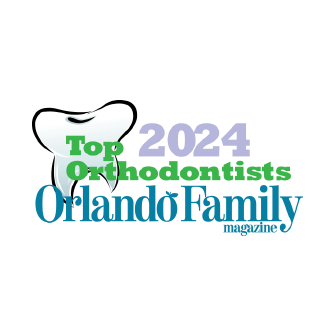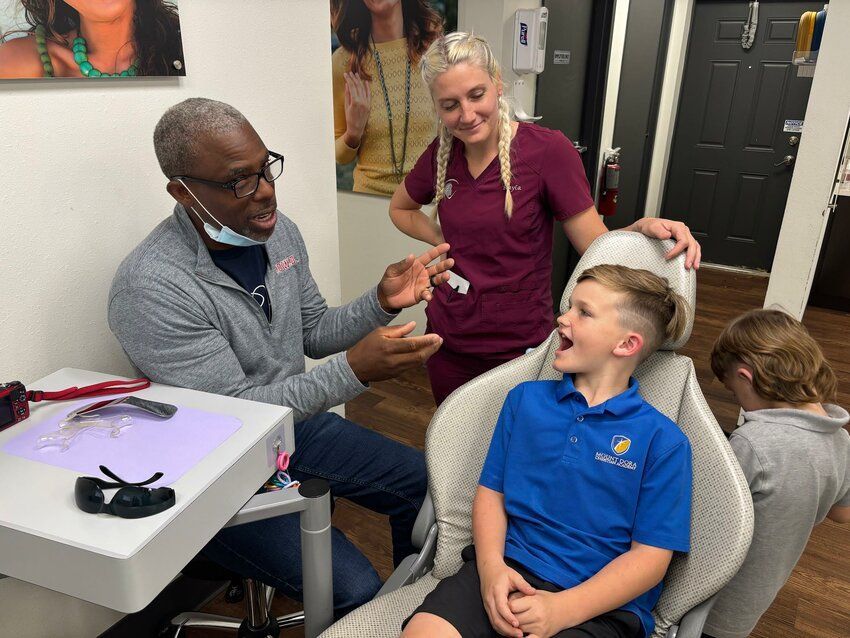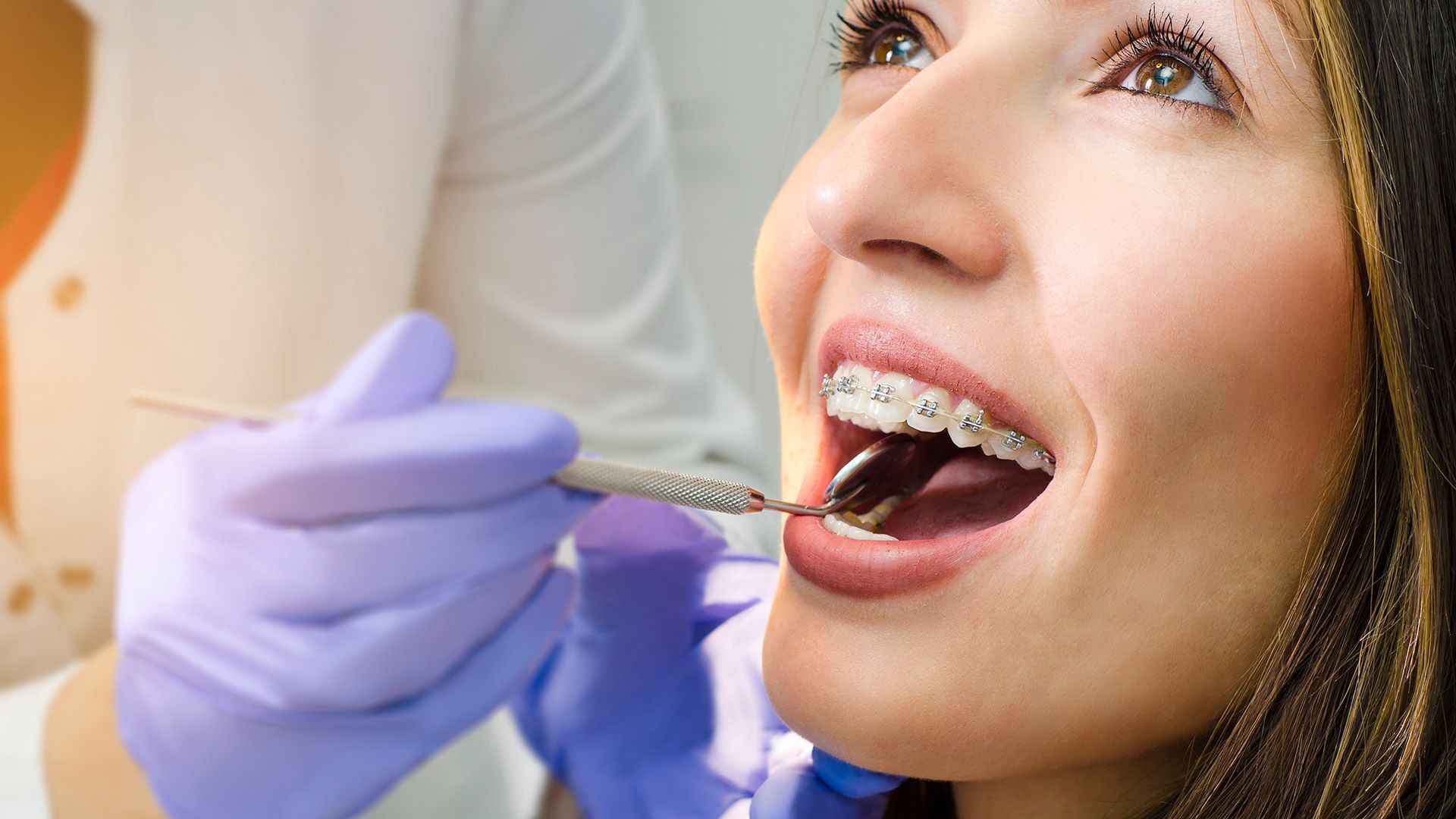Why Do People Need Braces?
Braces are more than just a cosmetic enhancement; they play a crucial role in achieving optimal dental health. Many individuals seek orthodontic treatment to correct misaligned teeth, improve bite issues, and enhance overall oral function. Crooked or improperly spaced teeth can lead to a range of problems, including difficulty in chewing, increased risk of tooth decay, and jaw pain. Understanding the reasons for needing braces can help you make an informed decision about orthodontic treatment. In this article, we will explore the common dental issues braces can address, the benefits of treatment, and much more to help you understand why braces might be essential for you or your child.

Common Dental Issues Addressed by Braces
Braces are a common orthodontic solution for various dental issues, significantly improving both functionality and aesthetics. One prevalent issue is the overbite, which occurs when the upper front teeth significantly overlap the lower front teeth. Overbites can lead to uneven wear on teeth, jaw pain, and even temporomandibular joint (TMJ) disorders if left untreated. By correcting an overbite with braces, patients can achieve a more balanced bite and enhance their overall oral health.
On the other end of the spectrum is the underbite, where the lower teeth protrude beyond the upper teeth. This misalignment can cause discomfort and strain on the jaw, leading to difficulties in chewing and speaking. An untreated underbite can also result in uneven tooth wear and increased risk of dental injuries. Braces can effectively realign the jaw and teeth, ensuring a proper bite and reducing associated health risks.
Open bites are another dental concern that braces can address. An open bite occurs when the upper and lower teeth do not touch when the mouth is closed, often resulting from habits such as thumb-sucking or prolonged pacifier use in childhood. This condition can hinder effective chewing and affect speech clarity, creating challenges in daily life. By using braces to close the gap, orthodontists can help patients regain functionality in their bite and improve their confidence in communication.
The Benefits of Getting Braces
Getting braces is often seen as a rite of passage for many individuals, and for good reason. One of the most significant benefits of braces is improved oral hygiene and a reduced risk of cavities. When teeth are misaligned, they can create hard-to-reach areas that make brushing and flossing more challenging. With braces, teeth are straightened, allowing for better cleaning and a healthier mouth overall.
Another crucial advantage of braces is enhanced chewing efficiency and comfort. Misaligned teeth can lead to difficulty in chewing food properly, which may cause discomfort and digestive issues. By correcting the alignment of your teeth, braces enable you to bite and chew more effectively, making mealtime a more enjoyable experience.
Perhaps one of the most impactful benefits of getting braces is the boost in self-esteem and confidence that comes from having a better smile. Many individuals who undergo orthodontic treatment report feeling more self-assured in social situations and less self-conscious about their appearance. A well-aligned smile can open doors to new opportunities, whether in personal relationships or professional settings. Understanding the reasons for needing braces can help you appreciate the transformative potential of orthodontic treatment.
Braces for Different Age Groups
Braces are not just for children and teenagers; they play a crucial role in orthodontic treatment for all age groups. When it comes to teen patients, their unique needs often include a focus on both aesthetic and functional improvements. Teens are typically more concerned about their appearance, making it essential to offer braces that are discreet yet effective, such as clear aligners or ceramic braces. Additionally, the teenage years are a pivotal time for jaw and dental development, which can greatly influence the effectiveness of orthodontic treatment.
On the other hand, adults are increasingly opting for braces, motivated by advancements in orthodontic technology and a greater awareness of the benefits of a straight smile. Many adults seek braces to address long-standing dental issues that were never treated during childhood. Modern solutions like braces and clear aligners provide options that fit seamlessly into their lifestyle, allowing them to achieve their desired results without compromising their professional appearance.
It's important to note that the treatment approaches for children and adults differ significantly. Children often benefit from interceptive orthodontics, which can guide the growth of the jaw and teeth, while adults may require more comprehensive treatment due to established dental issues. So, why do people need braces at different life stages? To help tailor treatment plans to meet the specific needs of each age group, ensuring that every patient receives the most effective and appropriate care for their orthodontic journey.
Signs You Might Need Braces
Identifying the signs that you or your child might need braces is crucial for maintaining optimal dental health. Some common symptoms include crowded teeth, gaps between teeth, overbites, underbites, or crossbites. If you notice that teeth are overlapping or that there’s a noticeable misalignment, these could be indicators that braces are necessary.
When evaluating your child's dental alignment, it's important to observe their bite and how their teeth come together. You should look for any irregularities, such as difficulty in chewing or speaking, which can often be linked to alignment issues. Parents should also pay attention to whether adult teeth are coming in properly and if they are significantly overlapping or misaligned. Regular dental check-ups can help monitor these developments.
If you suspect that braces may be needed, it’s best to schedule a consultation with an orthodontist. Early evaluations, typically around the age of seven, can help identify potential issues before they become more complex. An orthodontist can provide a thorough assessment and recommend the best course of action, ensuring that any necessary treatment is timely and effective. Understanding the reasons for needing braces early on can be beneficial for achieving a healthy, beautiful smile.
Alternatives to Traditional Braces
For those seeking orthodontic treatment, traditional braces are not the only option. Clear aligners have gained popularity as an effective alternative. These virtually invisible trays are custom-made to gradually shift teeth into their desired positions. One of the key benefits of clear aligners is their removability, allowing for easier maintenance of oral hygiene and the freedom to enjoy your favorite foods without restrictions. Additionally, many patients find the aesthetic appeal of clear aligners to be a significant advantage, as they can achieve a straighter smile without the noticeable appearance of metal braces.
Another important component of orthodontics is the use of retainers. After completing treatment with braces or aligners, retainers play a crucial role in ensuring that teeth remain in their new positions. They help to maintain the results achieved during the orthodontic process, preventing any regression. Retainers come in various forms, including fixed and removable options, tailored to fit individual needs and preferences.
Furthermore, advancements in orthodontic treatments are continually evolving, offering patients more choices than ever. Innovative technologies, such as 3D imaging and digital treatment planning, allow for more precise and efficient care. These advancements not only enhance the effectiveness of treatments but also improve the overall patient experience, making orthodontic care more accessible and tailored to individual requirements. Understanding why people need braces and exploring all available options can help you make the best choice for your orthodontic journey.

7260 WEST COLONIAL DR.
ORLANDO, FL 32818
(407) 294-1560
8907 CONROY WINDERMERE RD. ORLANDO, FL 32835
(407) 217-2927
12 S PARK AVE
APOPKA, FL 32703
(407) 801-7775











